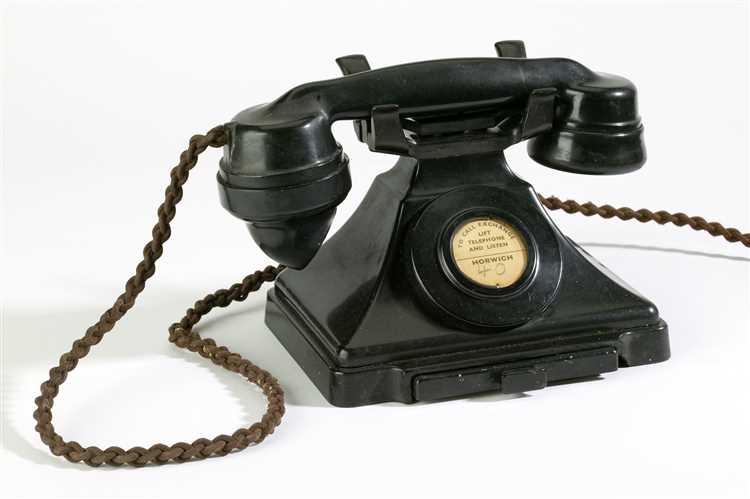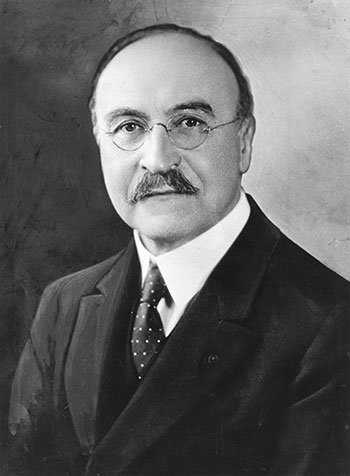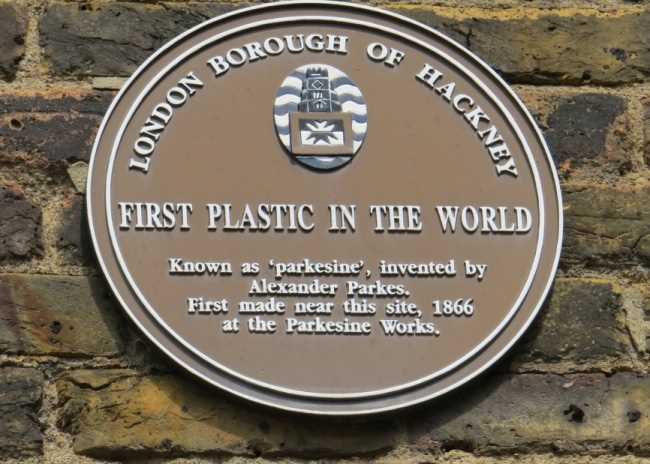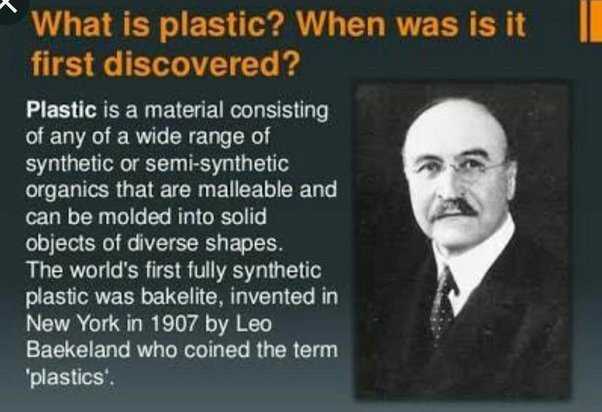
Plastic, a material that has become an integral part of our everyday lives, was not always known by this name. In fact, its original name was quite different. The origins of plastic can be traced back to the early 20th century, when a chemist named Leo Hendrik Baekeland invented a revolutionary material that would go on to change the world. However, Baekeland did not initially call his creation “plastic”.
The first name given to this groundbreaking material was “Bakelite”. Baekeland combined the words “Bakel” – the name of his family – and “-ite”, a suffix commonly used in chemistry to denote polymers. Bakelite was the world’s first synthetic plastic, and it quickly gained popularity due to its versatility and durability. The material could be molded into various shapes and colors, making it ideal for a wide range of applications.
Over time, the term “plastic” was adopted to describe a whole class of synthetic materials with similar properties to Bakelite. The word “plastic” derives from the Greek word “plastikos”, which means “capable of being shaped or molded”. It perfectly encapsulated the malleable nature of the material and became the umbrella term for all types of plastic. Even though the name has changed, the impact of plastic on our society remains significant.
- Ancient Beginnings
- Development of Synthetic Materials
- The Birth of Plastic
- First Commercial Applications
- Celluloid
- Bakelite
- Polyethylene
- Plastic Revolution and Industrialization
- Modern Plastic: A Global Environmental Challenge
- Questions and answers:
- What was the original name for plastic?
- How did plastic get its name?
- Who invented plastic?
- Why was plastic originally created?
- What are some common uses of plastic today?
- What is the original name of plastic?
Ancient Beginnings
Despite being commonly associated with modern industrial society, the concept of plastic actually dates back to ancient times. As early as 1600 BCE, ancient civilizations were using natural materials like rubber and shellac to create objects with properties similar to plastic. For example, the ancient Egyptians used a type of natural rubber to make balls for their games.
In the 19th century, there was a renewed interest in developing artificial materials with the properties of natural rubber. The first breakthrough came in 1839, when Charles Goodyear accidentally discovered a process called vulcanization that gave rubber improved durability and elasticity. This paved the way for the production of a wide range of rubber-based products.
However, it wasn’t until the early 20th century that the modern plastics industry began to take shape. The term “plastic” derives from the Greek word “plastikos,” which means “capable of being shaped or molded.” In 1907, Leo Hendrik Baekeland invented Bakelite, the first fully synthetic plastic. Bakelite was a versatile and heat-resistant material that could be molded into various forms, making it a popular choice for products ranging from electrical insulators to jewelry.
From these ancient beginnings, plastic has evolved into a ubiquitous material that has transformed many aspects of our daily lives. Today, it’s hard to imagine a world without the convenience and versatility of plastic.
Development of Synthetic Materials

In the early 20th century, the development of synthetic materials revolutionized the way we live and make products. One of the most important breakthroughs during this time was the creation of plastic. Originally named “Bakelite” after its inventor, Belgian-born American chemist Leo Hendrik Baekeland, plastic quickly gained popularity due to its versatility and durability.
Bakelite, the first true synthetic plastic, was created in 1907. Baekeland had been searching for a replacement for the natural material shellac, which was used to insulate electronic components. After years of experimentation, he discovered that by combining formaldehyde with phenol, he could produce a hard, moldable substance that could be used in countless applications.
Following the success of Bakelite, the development of other types of plastic quickly followed. In the 1920s, a versatile and more accessible plastic called polyvinyl chloride (PVC) was invented. PVC could be easily molded and was suitable for a wide range of uses, from construction materials to electrical insulation.
In the 1930s, another significant synthetic material was developed: nylon. Nylon was the first synthetic fiber and revolutionized the textile industry. It was used to produce strong, lightweight fabrics that were resistant to wrinkles and easy to clean. Nylon stockings became a popular fashion item, replacing the traditional silk stockings.
The development of synthetic materials continued throughout the 20th century, with new plastics such as polyethylene, polystyrene, and polypropylene being introduced. These materials had various properties, making them suitable for different applications, ranging from packaging materials to household goods.
Today, synthetic materials are an integral part of our everyday lives. They are used in almost every industry, from transportation and electronics to healthcare and fashion. The invention of plastic and other synthetic materials has had a profound impact on society, enabling the production of more affordable and durable products.
The Birth of Plastic
Plastic, as we know it today, has become an essential part of our daily lives. It is found in almost everything we use, from packaging materials to electronic devices. But its origins can be traced back to the mid-19th century, when it was first created.
Plastic was originally named “Parkesine” after its inventor, Alexander Parkes. In 1856, Parkes developed the first man-made plastic by mixing cellulose with nitric acid and a solvent. This revolutionary material had properties similar to rubber, but it was much easier to shape and mold.
However, Parkesine was expensive to produce and had limited applications. It wasn’t until the late 19th century that improved versions of plastic were developed. In 1907, Leo Hendrik Baekeland invented Bakelite, the first truly synthetic plastic. Bakelite was made by combining phenol and formaldehyde, and it had a wide range of uses, from electrical insulators to jewelry.
Over the next few decades, more and more types of plastic were created, each with its own unique properties and applications. Today, there are thousands of different types of plastics, each serving a specific purpose and contributing to the modern world we live in.
Plastic has undoubtedly revolutionized many industries and aspects of our lives. Its durability, versatility, and low cost have made it an indispensable material. However, the rise of single-use plastics and plastic pollution has also raised environmental concerns. Finding sustainable alternatives and reducing plastic waste has become a global priority.
Despite its drawbacks, plastic remains an integral part of our modern society. Its birth in the 19th century paved the way for countless innovations and advancements. From the humble parkesine to the sophisticated plastics we have today, plastic has come a long way, shaping our world in ways we could have never imagined.
First Commercial Applications
Plastic, in its early days, was primarily used as a substitute for natural materials such as ivory, tortoiseshell, and wood. Its versatility and durability made it an attractive alternative, especially for luxury goods.
Celluloid
One of the earliest forms of plastic, known as celluloid, gained popularity in the late 19th century. Celluloid, made from cellulose nitrate, was used to create items such as combs, buttons, and photographic film. Its low cost, ease of production, and malleability made it an ideal material for mass production.
Bakelite
In 1907, Leo Baekeland invented a new type of plastic, which he named Bakelite. Bakelite was the first truly synthetic plastic and was derived from phenol and formaldehyde. It was heat resistant, electrically non-conductive, and had a high resistance to chemical attack. Bakelite found numerous applications in the electrical industry, including as insulating materials for switches, connectors, and telephone casings.
Polyethylene

In the 1930s, scientists discovered polyethylene, a plastic made from the polymerization of ethylene gas. This marked a significant milestone in the development of plastics as polyethylene was inexpensive, flexible, and had excellent electrical insulation properties. Polyethylene’s commercial applications grew rapidly, and it became widely used in packaging, wire insulation, toys, and plumbing.
As time went on, advancements in plastic technology led to the development of different types of plastics and revolutionized various industries. Plastics became integral in the manufacturing of automobiles, airplanes, household appliances, and medical equipment, among other applications.
Today, plastic is an indispensable material in our modern world, playing a crucial role in various sectors. However, the environmental impact of plastic waste has become a significant concern, and efforts are being made to reduce its usage and promote recycling.
Plastic Revolution and Industrialization
The Plastic Revolution and Industrialization marked a turning point in the history of materials and manufacturing. It was during this time that plastic, originally known as “Parkesine” after its inventor Alexander Parkes, gained recognition and popularity.
Plastic, in its early days, revolutionized the industrial sector by providing a versatile and malleable alternative to traditional materials such as wood, metal, and glass. The invention of plastic opened up a world of possibilities and sparked a revolution in various industries, including packaging, automotive, construction, and consumer goods.
With its unique properties, plastic quickly became a sought-after material due to its lightness, durability, and resistance to heat, chemicals, and water. It allowed for mass production and customization, enabling manufacturers to create products at a much faster rate and at a lower cost.
The Plastic Revolution and Industrialization reshaped the manufacturing landscape, leading to the development of new technologies and processes. Injection molding, blow molding, and extrusion became key methods for producing plastic products in large quantities. This revolution, combined with the rise of automation and mechanization, propelled the industrial sector into a new era of efficiency and productivity.
Plastic’s impact was not without its drawbacks, however. The durability that made it so desirable also posed environmental challenges, as plastic waste started to accumulate and cause pollution. Despite these concerns, researchers and innovators continue to work towards finding sustainable solutions and improving the recyclability of plastic.
Overall, the Plastic Revolution and Industrialization had a profound effect on society, transforming the way products were made and consumed. It paved the way for countless innovations and advancements, leaving an indelible mark on the modern world.
Modern Plastic: A Global Environmental Challenge

Plastic, originally named as “bakelite,” was invented in 1907 by Leo Hendrik Baekeland, a Belgian-American chemist. Since then, plastic has become an integral part of our daily lives, revolutionizing various industries and providing us with convenience and functionality. However, the widespread use of plastic has also led to a significant global environmental challenge.
Plastic pollution has become a pressing issue worldwide, with devastating consequences for the environment and wildlife. The durability and resistance to degradation that make plastic so useful also mean that it can persist in the environment for hundreds of years. As a result, plastic waste accumulates in landfills, rivers, oceans, and other natural ecosystems, posing a threat to marine life, birds, and other animals.
Plastic pollution not only harms wildlife but also affects human health. Microplastics, tiny particles of plastic less than 5mm in size, have been found in our water sources, food, and even the air we breathe. These microplastics can contain toxic chemicals, such as bisphenol A (BPA) and phthalates, which have been linked to various health issues, including hormone disruption, reproductive problems, and cancer.
The production of plastic also contributes to climate change and depletes finite resources. The extraction of fossil fuels, such as crude oil and natural gas, to produce plastic releases greenhouse gases into the atmosphere, contributing to global warming. Additionally, the manufacturing process requires large amounts of water and energy, further straining our already limited resources.
To address the global plastic challenge, various initiatives and measures have been implemented. These include recycling programs, bans on single-use plastics, and the development of biodegradable alternatives. However, changing our reliance on plastic and finding sustainable solutions require a collective effort from individuals, businesses, governments, and organizations.
| Key Environmental Issues Caused by Plastic |
|---|
| 1. Plastic pollution in marine ecosystems |
| 2. Harm to wildlife and ecosystems |
| 3. Microplastic contamination and human health risks |
| 4. Contribution to climate change and resource depletion |
It is crucial to raise awareness about the environmental impact of plastic and promote responsible consumption and disposal practices. By reducing our use of single-use plastics, recycling diligently, and supporting sustainable alternatives, we can all play a part in mitigating the global plastic challenge and protecting our planet for future generations.
Questions and answers:
What was the original name for plastic?
The original name for plastic was Bakelite.
How did plastic get its name?
Plastic got its name from the Greek word “plastikos”, which means “capable of being shaped or molded”.
Who invented plastic?
Plastic was invented by Leo Hendrik Baekeland, a Belgian-born American chemist, in 1907.
Why was plastic originally created?
Plastic was originally created as a substitute for ivory and other scarce materials used for manufacturing goods.
What are some common uses of plastic today?
Common uses of plastic today include packaging materials, household items, car parts, toys, and electrical insulation.
What is the original name of plastic?
The original name of plastic is “Celluloid”.